























Liver Transplantation Center
Liver Transplantation Center at Group Florence Nightingale Hospitals is highly specialized and experienced in “Living Liver Donor Transplant” for both adult and pediatric patients. Moreover, the center is elected as the one and only living donor liver transplant training center by the European Society for Organ Transplant (ESOT).
Directed by Prof. Yıldıray Yüzer, MD, the transplant team performs more than 100 transplants per year, and has been accomplished more than 1500 transplant since 2004. Each year more than 80% of transplants are being performed from living donors.
Our liver transplant team is the first to perform adult-to-adult right lobe living donor liver transplant, split liver transplant to two adults at the same time, domino liver transplant, and dual left lobe liver transplant.
Based on annual reports of the Turkish Republic, the Ministry of Health, more than 95% of our liver transplant patients are able to live a normal daily life after transplant.
To fulfill our mission about being a pioneering institution which is innovative and continuously improving, we are honored to train not only surgeons but also hepatologists, anesthesiologists, radiologists, intensivists, nurses, coordinators and technicians from all over Europe.
What do we offer for our patients?
What are our services?
Besides living donor liver transplant, our experts render services in:
Stages of liver transplantation journey
Preparation for the transplant
After a patient is diagnosed as a candidate for transplantation (recipient), it is time to determine a donor (a healthy person who is willing to give a part of his/her liver). Since it is prohibited to have a cadaveric transplant from a Turkish citizen, all of our patients from overseas should have live or swap liver transplant legally.
The recipient (patient) is evaluated for transplantation in 3 stages; it will take 5-7-day’s hospitalization.
Stage 1: Definite diagnosis; determination of liver disease intensity, and emergency of transplant.
Stage 2: Multiple systemic evaluation for transplant such as heart, lungs, kidneys, total blood count. If there is any pathology such as infection, treatment of it. Our experts on the transplant team perform necessary work-ups to estimate transplant success depending on patient’s condition, underlying cause, and disease intensity.
Stage 3: Psychological and mental preparation of patient for transplant. Patient and the family members are informed about the procedure, hospitalization, possible progression after surgery, and healthcare issues.
Donor is evaluated for match with the patient.
Transplantation
From the living donor
In the transplant of the liver from the living donor, the liver part taken from the live donor is transplanted to the recipient immediately after the patient’s liver has been completely removed.
The liver, unlike any other organ in the body, is capable of regeneration and growth making live donor liver transplant possible. The liver’s self-feeding starts immediately and lasts for six months. This is why when surgeons remove part of the liver from the donor, the remaining part of the donor and the part placed on the recipient are quickly returned to its original dimensions.
A living donor liver transplant can be performed without waiting the deceased donor list. Since organ donation is not widespread enough in our country, patients in the list have to wait long time.
In this process, the patient’s condition may deteriorate, so the rate of success after transplant may decrease as complication risks will increase in the early period after transplant.

Swap Liver Transplant
Swap liver transplant is performed when blood type of donor is incompatible with the recipient.
For long years, the organs needed for organ transplantation are obtained from a donor with brain death whose family gives consent or from close relatives who donate a part of their liver. A large number of people in the world has a chance to live and can go back to their active and healthy life through liver transplantation.
Recently, the success rate of liver transplant has rapidly improved with the new drugs and improved surgical techniques and the postoperative patient survival rate and life of quality has been increased.
Swap liver transplantations, thus, is possible to save many people’s life. Many patients are waiting for the cadaver lists unaware of each other, and eventually die. Our purpose is to bring these people together via our network and enable liver transplant by matching the compatible donors.
After transplantation
The patient is transferred to the intensive care unit (ICU), and is connected to respiratory assisted device for approximately 26-48 hours. According to his/her general condition, the patient is transferred to the ward. He/she is followed up for fever, jaundice (yellowish coloring of mucosa and skin), pain, fluid accumulation, and transplanted liver functions.
Our patients attend intensive physical and mental rehabilitation program developed to speed up their recovery.
After discharge from our institution, transplant patients are scheduled for follow up visits at outpatient clinic of our center.
What to care after discharge?
You should care for
Please get in touch with your transplant team if:
Do not use any drugs before our team examines/recommends you!
Beware that you should start antibiotics 24 hours before, and 48 hours after any tooth operation. This is called prophylaxis.
What procedures are available at Group Florence Nightingale Hospitals?
How many medical staff are there at Group Florence Nightingale Hospitals and what accreditations do they have?
A liver transplant is a surgical procedure that replaces a liver that is diseased or no longer functions properly with a liver from a deceased donor or a portion of a healthy liver from a living donor. The living donor can be:
Someone who is emotionally related to the recipient such as a good friend, a significant other, or a spouse.
A family member of the recipient, such as a parent, adult child, brother, or sister.
Other biologically related relatives, such as an aunt, uncle, or cousin.
A person who has heard about the transplant candidate’s need.
Altruistic donation or non-directed living-donor. This means that the donor does not know or name the recipient of the donated liver. The match is based on blood type compatibility and medical need. The donor may choose not to know the recipient or may meet if both agree.
When the living donor is a family member, it is called a living related donor liver transplant.
Living related donor liver transplant is usually used as an alternative to waiting for a deceased donor liver or an altruistic donation to become available. A liver transplant from a living donor is possible because the human liver can regenerate and return to its normal size, capacity, and volume within a couple of months after surgical removal of part of the organ. The transplanted liver portion in the recipient will grow and restore normal liver function as well.
Not everyone can be a living related donor. The donor has to be healthy and able to safely undergo major surgery. In addition, the donor’s blood type, age, and organ size are critical considerations in determining whether the recipient and the donor are a match. Extensive health and psychological evaluation are required to make sure that the donor and the recipient are a match, as well as to assess the donor’s mental and physical health.
The recovery period depends on the severity of your condition before your liver transplant surgery. In general, the full recovery time until you feel fully healed after your liver transplant surgery can take around six months or more. However, you should be able to return to some of your normal activities, including work (office job) within 2 to 4 months following your surgery. Simple activities of daily living may be resumed within a few weeks.
The success rate of the liver transplant depends on your specific situation. In general, around 75% of people who have a liver transplant live for at least five years. People who receive a liver from a living related donor usually have longer survival rates than those who receive a deceased donor liver. Also, people who have a living related donor liver transplant seem to experience fewer medical problems.
The risks and side effects associated with liver transplant include rejection of the donated liver, bleeding, bile duct complications, failure of donated liver, infection, mental confusion, seizures, and recurrence of liver disease in the transplanted liver.

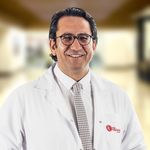
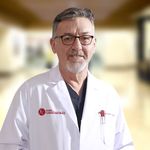
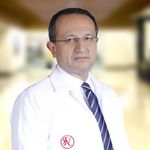

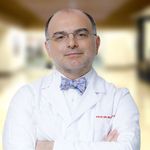


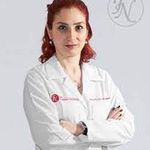
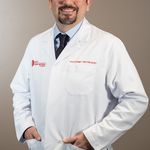

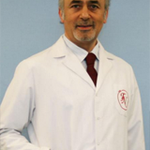
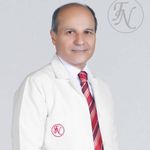







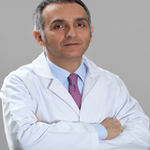
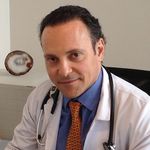
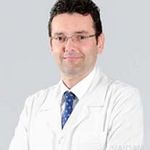

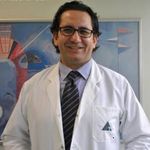
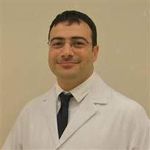
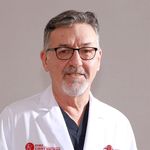
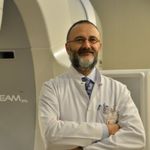



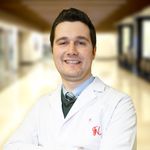





Liver Transplantation Center
Liver Transplantation Center at Group Florence Nightingale Hospitals is highly specialized and experienced in “Living Liver Donor Transplant” for both adult and pediatric patients. Moreover, the center is elected as the one and only living donor liver transplant training center by the European Society for Organ Transplant (ESOT).
Directed by Prof. Yıldıray Yüzer, MD, the transplant team performs more than 100 transplants per year, and has been accomplished more than 1500 transplant since 2004. Each year more than 80% of transplants are being performed from living donors.
Our liver transplant team is the first to perform adult-to-adult right lobe living donor liver transplant, split liver transplant to two adults at the same time, domino liver transplant, and dual left lobe liver transplant.
Based on annual reports of the Turkish Republic, the Ministry of Health, more than 95% of our liver transplant patients are able to live a normal daily life after transplant.
To fulfill our mission about being a pioneering institution which is innovative and continuously improving, we are honored to train not only surgeons but also hepatologists, anesthesiologists, radiologists, intensivists, nurses, coordinators and technicians from all over Europe.
What do we offer for our patients?
What are our services?
Besides living donor liver transplant, our experts render services in:
Stages of liver transplantation journey
Preparation for the transplant
After a patient is diagnosed as a candidate for transplantation (recipient), it is time to determine a donor (a healthy person who is willing to give a part of his/her liver). Since it is prohibited to have a cadaveric transplant from a Turkish citizen, all of our patients from overseas should have live or swap liver transplant legally.
The recipient (patient) is evaluated for transplantation in 3 stages; it will take 5-7-day’s hospitalization.
Stage 1: Definite diagnosis; determination of liver disease intensity, and emergency of transplant.
Stage 2: Multiple systemic evaluation for transplant such as heart, lungs, kidneys, total blood count. If there is any pathology such as infection, treatment of it. Our experts on the transplant team perform necessary work-ups to estimate transplant success depending on patient’s condition, underlying cause, and disease intensity.
Stage 3: Psychological and mental preparation of patient for transplant. Patient and the family members are informed about the procedure, hospitalization, possible progression after surgery, and healthcare issues.
Donor is evaluated for match with the patient.
Transplantation
From the living donor
In the transplant of the liver from the living donor, the liver part taken from the live donor is transplanted to the recipient immediately after the patient’s liver has been completely removed.
The liver, unlike any other organ in the body, is capable of regeneration and growth making live donor liver transplant possible. The liver’s self-feeding starts immediately and lasts for six months. This is why when surgeons remove part of the liver from the donor, the remaining part of the donor and the part placed on the recipient are quickly returned to its original dimensions.
A living donor liver transplant can be performed without waiting the deceased donor list. Since organ donation is not widespread enough in our country, patients in the list have to wait long time.
In this process, the patient’s condition may deteriorate, so the rate of success after transplant may decrease as complication risks will increase in the early period after transplant.

Swap Liver Transplant
Swap liver transplant is performed when blood type of donor is incompatible with the recipient.
For long years, the organs needed for organ transplantation are obtained from a donor with brain death whose family gives consent or from close relatives who donate a part of their liver. A large number of people in the world has a chance to live and can go back to their active and healthy life through liver transplantation.
Recently, the success rate of liver transplant has rapidly improved with the new drugs and improved surgical techniques and the postoperative patient survival rate and life of quality has been increased.
Swap liver transplantations, thus, is possible to save many people’s life. Many patients are waiting for the cadaver lists unaware of each other, and eventually die. Our purpose is to bring these people together via our network and enable liver transplant by matching the compatible donors.
After transplantation
The patient is transferred to the intensive care unit (ICU), and is connected to respiratory assisted device for approximately 26-48 hours. According to his/her general condition, the patient is transferred to the ward. He/she is followed up for fever, jaundice (yellowish coloring of mucosa and skin), pain, fluid accumulation, and transplanted liver functions.
Our patients attend intensive physical and mental rehabilitation program developed to speed up their recovery.
After discharge from our institution, transplant patients are scheduled for follow up visits at outpatient clinic of our center.
What to care after discharge?
You should care for
Please get in touch with your transplant team if:
Do not use any drugs before our team examines/recommends you!
Beware that you should start antibiotics 24 hours before, and 48 hours after any tooth operation. This is called prophylaxis.
What procedures are available at Group Florence Nightingale Hospitals?
How many medical staff are there at Group Florence Nightingale Hospitals and what accreditations do they have?






















Liver Transplantation Center
Liver Transplantation Center at Group Florence Nightingale Hospitals is highly specialized and experienced in “Living Liver Donor Transplant” for both adult and pediatric patients. Moreover, the center is elected as the one and only living donor liver transplant training center by the European Society for Organ Transplant (ESOT).
Directed by Prof. Yıldıray Yüzer, MD, the transplant team performs more than 100 transplants per year, and has been accomplished more than 1500 transplant since 2004. Each year more than 80% of transplants are being performed from living donors.
Our liver transplant team is the first to perform adult-to-adult right lobe living donor liver transplant, split liver transplant to two adults at the same time, domino liver transplant, and dual left lobe liver transplant.
Based on annual reports of the Turkish Republic, the Ministry of Health, more than 95% of our liver transplant patients are able to live a normal daily life after transplant.
To fulfill our mission about being a pioneering institution which is innovative and continuously improving, we are honored to train not only surgeons but also hepatologists, anesthesiologists, radiologists, intensivists, nurses, coordinators and technicians from all over Europe.
What do we offer for our patients?
What are our services?
Besides living donor liver transplant, our experts render services in:
Stages of liver transplantation journey
Preparation for the transplant
After a patient is diagnosed as a candidate for transplantation (recipient), it is time to determine a donor (a healthy person who is willing to give a part of his/her liver). Since it is prohibited to have a cadaveric transplant from a Turkish citizen, all of our patients from overseas should have live or swap liver transplant legally.
The recipient (patient) is evaluated for transplantation in 3 stages; it will take 5-7-day’s hospitalization.
Stage 1: Definite diagnosis; determination of liver disease intensity, and emergency of transplant.
Stage 2: Multiple systemic evaluation for transplant such as heart, lungs, kidneys, total blood count. If there is any pathology such as infection, treatment of it. Our experts on the transplant team perform necessary work-ups to estimate transplant success depending on patient’s condition, underlying cause, and disease intensity.
Stage 3: Psychological and mental preparation of patient for transplant. Patient and the family members are informed about the procedure, hospitalization, possible progression after surgery, and healthcare issues.
Donor is evaluated for match with the patient.
Transplantation
From the living donor
In the transplant of the liver from the living donor, the liver part taken from the live donor is transplanted to the recipient immediately after the patient’s liver has been completely removed.
The liver, unlike any other organ in the body, is capable of regeneration and growth making live donor liver transplant possible. The liver’s self-feeding starts immediately and lasts for six months. This is why when surgeons remove part of the liver from the donor, the remaining part of the donor and the part placed on the recipient are quickly returned to its original dimensions.
A living donor liver transplant can be performed without waiting the deceased donor list. Since organ donation is not widespread enough in our country, patients in the list have to wait long time.
In this process, the patient’s condition may deteriorate, so the rate of success after transplant may decrease as complication risks will increase in the early period after transplant.

Swap Liver Transplant
Swap liver transplant is performed when blood type of donor is incompatible with the recipient.
For long years, the organs needed for organ transplantation are obtained from a donor with brain death whose family gives consent or from close relatives who donate a part of their liver. A large number of people in the world has a chance to live and can go back to their active and healthy life through liver transplantation.
Recently, the success rate of liver transplant has rapidly improved with the new drugs and improved surgical techniques and the postoperative patient survival rate and life of quality has been increased.
Swap liver transplantations, thus, is possible to save many people’s life. Many patients are waiting for the cadaver lists unaware of each other, and eventually die. Our purpose is to bring these people together via our network and enable liver transplant by matching the compatible donors.
After transplantation
The patient is transferred to the intensive care unit (ICU), and is connected to respiratory assisted device for approximately 26-48 hours. According to his/her general condition, the patient is transferred to the ward. He/she is followed up for fever, jaundice (yellowish coloring of mucosa and skin), pain, fluid accumulation, and transplanted liver functions.
Our patients attend intensive physical and mental rehabilitation program developed to speed up their recovery.
After discharge from our institution, transplant patients are scheduled for follow up visits at outpatient clinic of our center.
What to care after discharge?
You should care for
Please get in touch with your transplant team if:
Do not use any drugs before our team examines/recommends you!
Beware that you should start antibiotics 24 hours before, and 48 hours after any tooth operation. This is called prophylaxis.
What procedures are available at Group Florence Nightingale Hospitals?
How many medical staff are there at Group Florence Nightingale Hospitals and what accreditations do they have?
CONTACT SUCCESSFUL